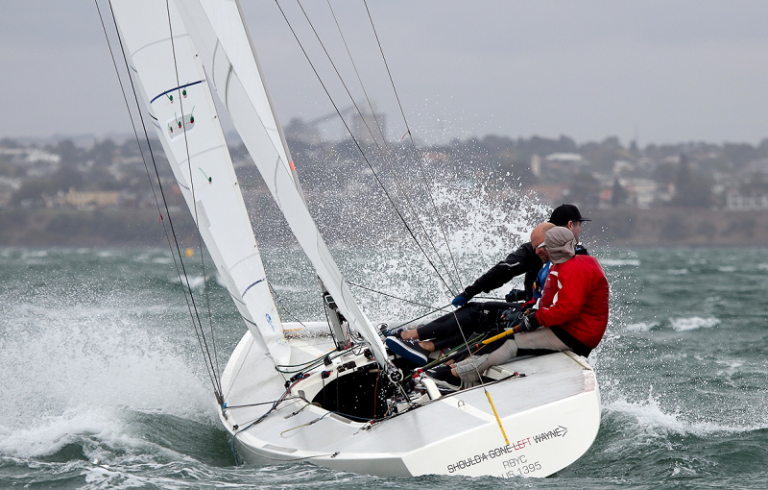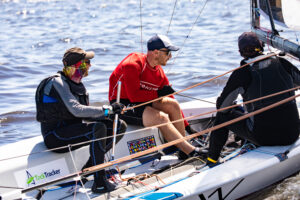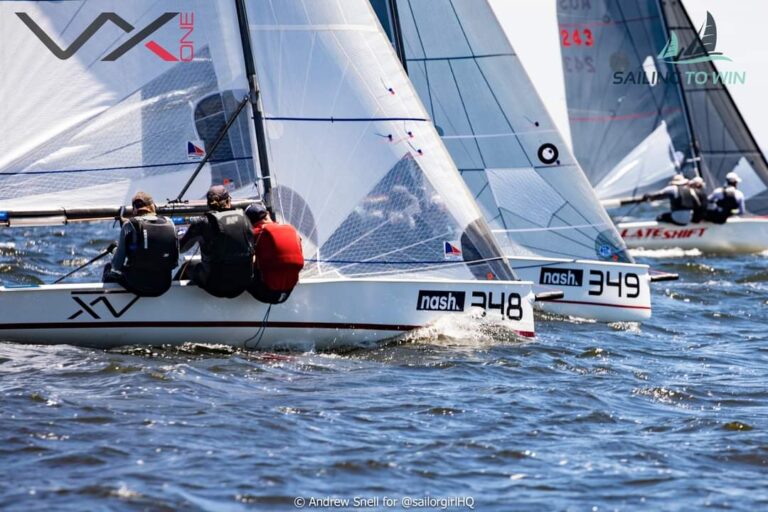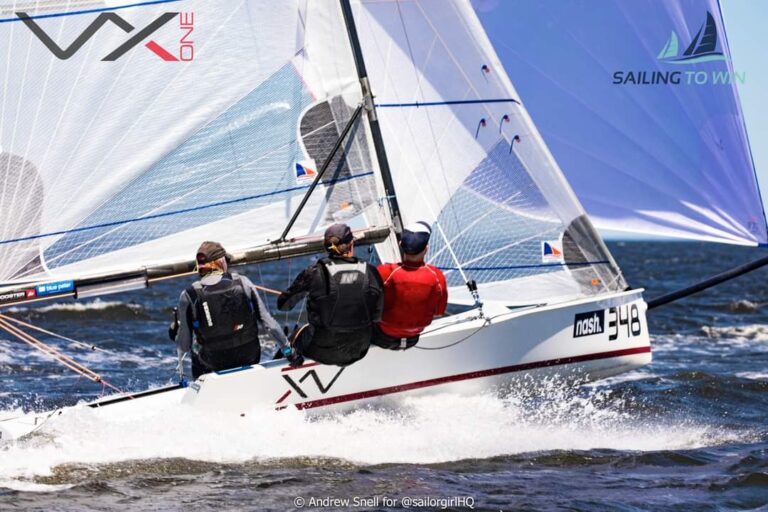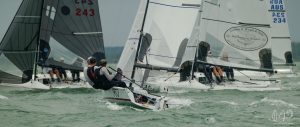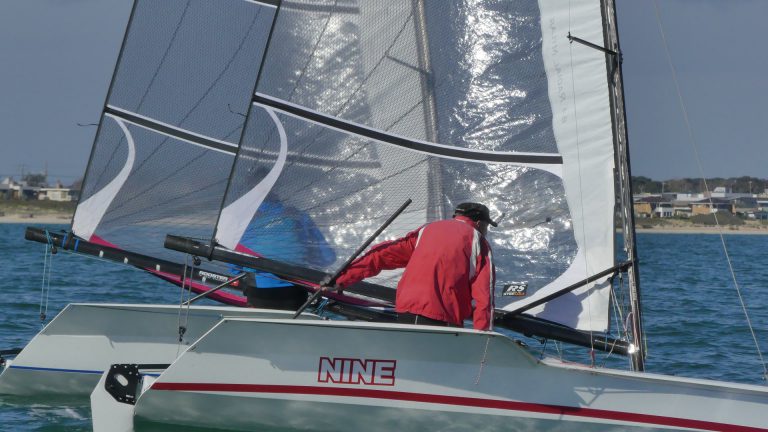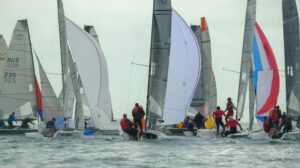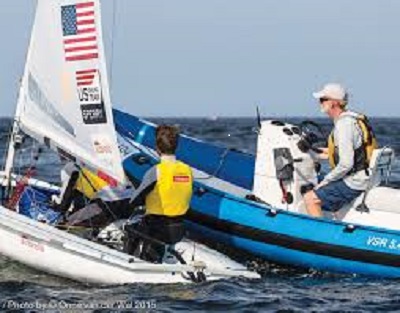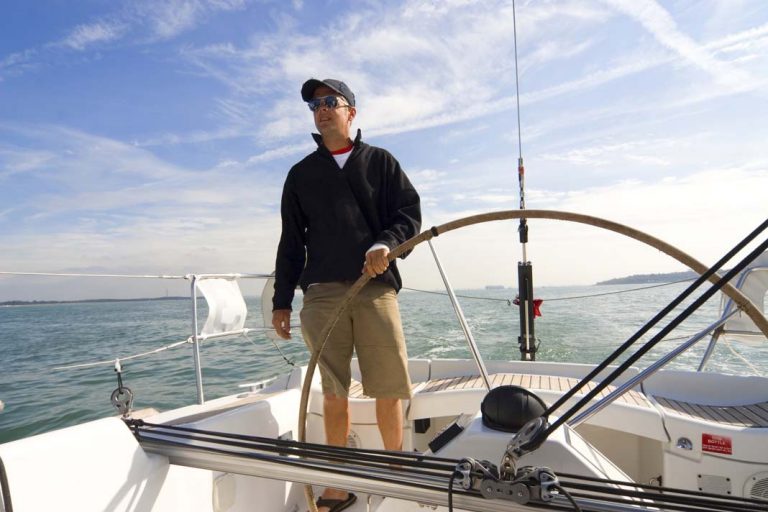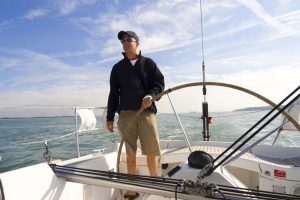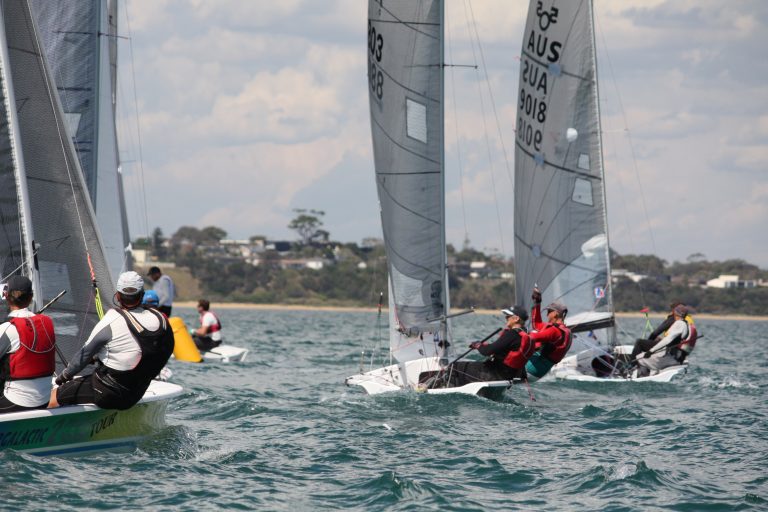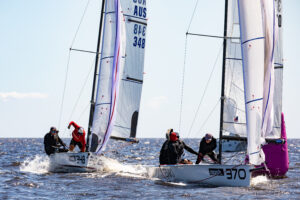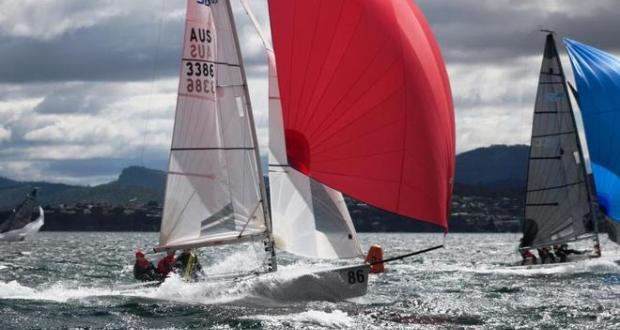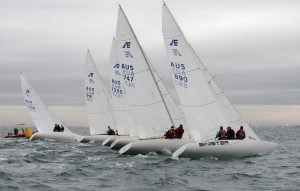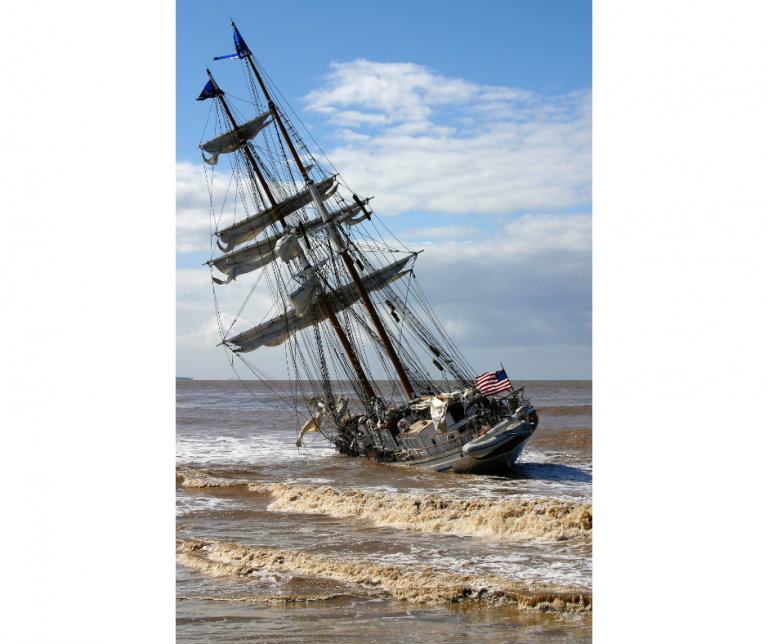Trim for varying Wind and Sea Conditions
When it comes to boat speed, most sailors know their trim settings in flat water and a steady breeze.
The real difference between a good sailor and a great one is the ability to adapt — making constant, subtle gear changes as the wind and sea conditions evolve.
Sailing isn’t static; neither should your setup be.
Understanding Why Gear Changes Matter
Think of your boat as a finely tuned machine. Every sail control, every rig adjustment, and every bit of crew movement changes how it behaves.
In light air, you’re searching for power and flow; in heavy air, you’re controlling heel and keeping balance. The aim is to keep the boat in the groove — always driving, never stalling, and never fighting the helm.
Making good gear changes is not about reacting to problems; it’s about anticipating them.
If you wait until you’re overpowered or wallowing in waves, you’ve already given away speed.
Great sailors are always half a step ahead, trimming or tuning in anticipation of what’s coming next.
Reading the Wind and Sea
Before making any adjustments, start by observing:
- Wind strength: Is the breeze building, or are you in a lull? Are the gusts sharp or gradual?
- Sea state: Are the waves long and rolling or short and steep? Longer waves let you steer more smoothly, while short chop demands extra power and careful balance.
- Boat feedback: Your helm and sails will tell you everything. If you feel weather helm (when the tiller pulls against you) or you’re constantly feathering up, it’s time to depower. If the boat feels sluggish or the telltales droop, you need more power.
A Real Example: Adjusting Mid-Race
A few years ago, during a blustery state championship, I watched a top crew in the fleet make the most disciplined gear changes I’ve ever seen.
The race started in 12 knots but quickly built to 18 with a sharp chop.
Half the fleet left their setup from the first beat — vang on hard, outhaul tight — and as the breeze increased, they struggled.
The fast team, on the other hand, made small changes constantly. They eased the outhaul slightly for the first set of waves, then added more Cunningham as the wind filled.
When a lull hit mid-leg, they eased the vang just enough to power up again.
The result? They weren’t just faster — they were smoother. The boat stayed balanced, the crew’s rhythm never broke, and they rounded every mark in control.
That’s what great gear changing looks like — proactive, not reactive.
Key Adjustments to Master
Increasing Breeze
- Flatten the mainsail: tighten the outhaul and Cunningham to open the leech and reduce heel.
- Tighten rig tension if adjustable; this controls mast bend and headsail shape.
- Ease the traveller slightly to keep balance without pointing too high.
- Shift crew weight to windward earlier than you think — balance is speed.
Lighter Winds or Flat Water
- Ease the outhaul to add depth and power.
- Reduce Cunningham to allow the sail’s draft to move aft for more acceleration.
- Keep the vang just firm enough to maintain leech tension without closing the top of the main.
- Move crew weight forward to reduce drag and keep the boat’s transom clear of the water.
Choppy Seas
- Don’t depower too much — you’ll need a fuller sail to punch through waves.
- Ease the sheets slightly to maintain flow and drive.
- Focus on smooth steering — aim to guide the boat over the waves rather than through them.
- Use heel to your advantage; a gentle, consistent heel helps the boat track and absorb chop.
Fine-Tuning Your Feel
No two days are the same. The most effective sailors are constantly feeling how the boat responds.
Is the pressure on the helm consistent? Is the boat accelerating cleanly out of tacks? Small adjustments every few minutes — even a quarter-turn on the vang or a slight tweak on the traveller — keep you tuned in and connected.
A simple mental trick: check three things constantly — Boat speed, sail shape and helm feel.
If any of them change, it’s time to change gears.
Common Mistakes
- Changing too late: If you’re reacting to problems rather than preventing them, you’re behind the game.
- Over-adjusting: Big, sudden changes upset balance. Think small and frequent.
- Ignoring sea state: Many sailors tune for wind alone, but waves often have a bigger impact on speed.
- Neglecting feedback: If the boat feels sticky, don’t blame the conditions — make a change.
Action Conclusion: Be Proactive, Not Reactive
On the water this week, challenge yourself to stay ahead of the conditions. Don’t wait for the breeze to shift or the waves to slow you down — adjust early and often.
Every gear change is an experiment that teaches you more about your boat.
When the conditions change, act decisively: ease, tighten, move, or trim — then feel the difference. That’s where your real speed comes from.
Consistent, confident gear changing turns ordinary sailors into adaptable racers who thrive no matter what the course throws at them.
So next time you’re out there, make “anticipate and adjust” your mantra.
Your boat — and your results — will thank you.
